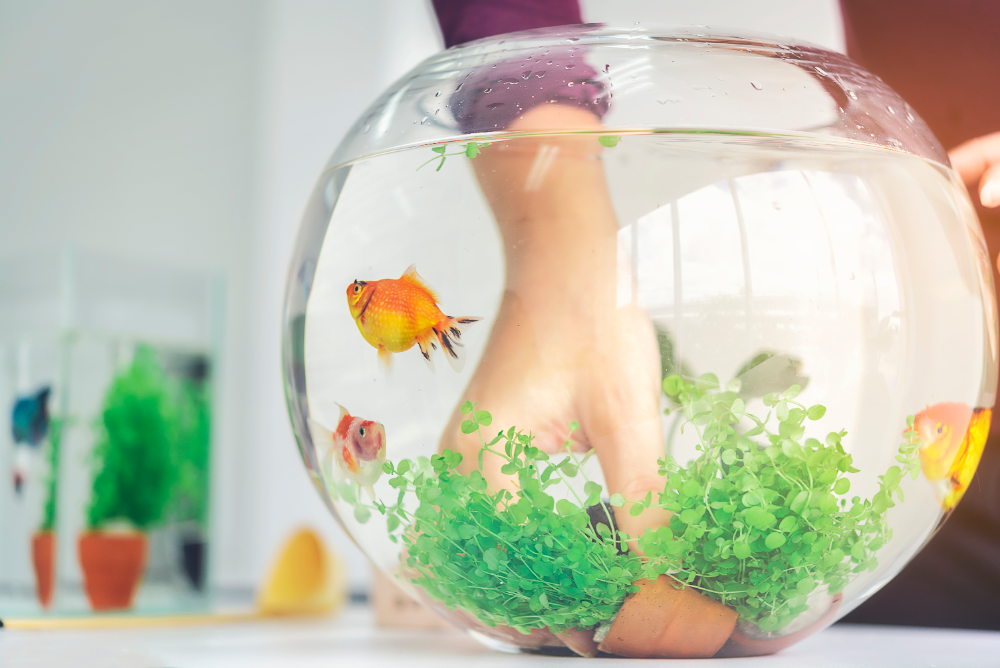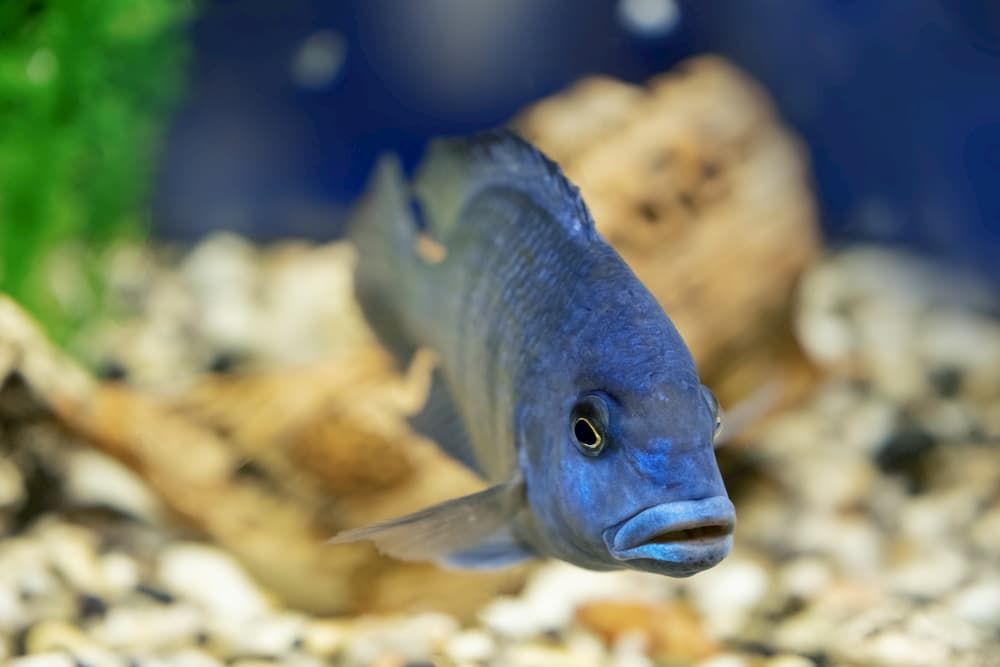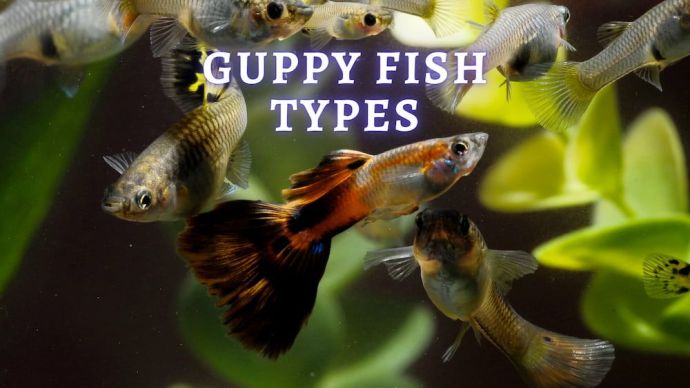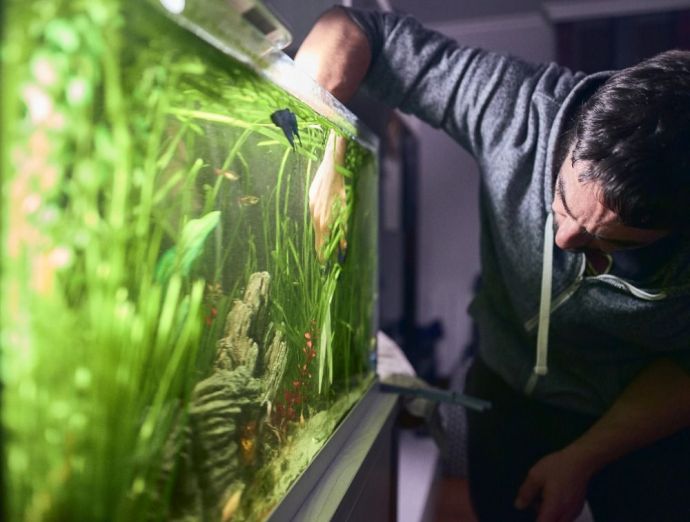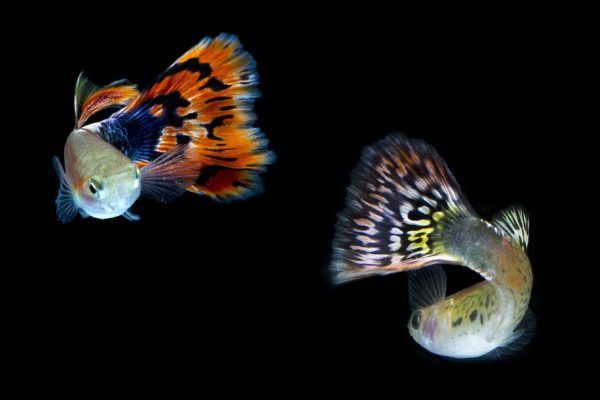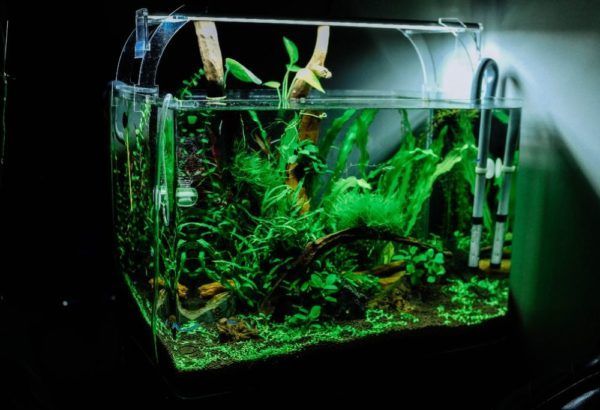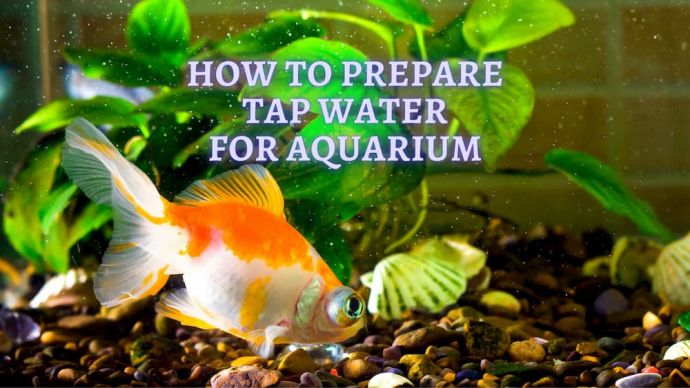How to Clean a Freshwater Fish Tank
Written by:
Author: Vicki Smirnova
Vicki Smirnova is a professional writer and editor who adores animals and helps readers get along well with their pets. She has been working in digital media for more than 5 years and has great experience writing content about lifestyle, including pets. Vicki specializes in dog health and nutrition, cat feeding, dog training. She is an aquarium lover and is passionate to write about fish care at home. Also, Vicki headed several websites and worked as a news editor.
View all 245 articlesLearn about our editorial process and veterinary review board.
Viewed: 306
Updated on: 06/09/2021
If you want your aquarium to have an attractive appearance, and the fish and plants were healthy, you need to take care of it. Although some fish are very good at cleaning the tank, a human must still take care of the aquarium.
Having an tank with freshwater inhabitants at home is a responsible hobby. Many factors affect aquarium pollution: lighting, type of algae, frequency of feeding, number of aquarium inhabitants, presence of putrid bacteria, and more.
A dirty tank can threaten the health of fish and other inhabitants. Cleaning the aquarium is not limited to changing the water; cleaning the decorations and walls of the tank is also necessary. To do this as correctly as possible, read this article before cleaning.
Important: this method only applies to freshwater fish and freshwater aquariums.
READ MORE: Best Fish Tanks Review
First Step: Preparation for cleaning
Before cleaning the aquarium, browse the specific literature, or consult a pet store about how often you need to change the water in a freshwater tank. Aquarists’ opinions on this matter differ, so we advise you to find several points of view and choose the most suitable for you.
Do not change all the water at once! As the water environment in the aquarium is formed by the fish and algae themselves, if you immediately change all the water you will endanger your fish.
Once every two weeks, you need to clean the aquarium, with all its decorations altogether. However, do not clean the tank more often because, during such cleaning, you remove bacteria from it, which in small quantities supports the entire environment’s life. To understand when to clean the tank, you can watch your fish; it may not be time yet, but the fish are covered in slime, their scales are dirty, and they swallow air, then it is worth cleaning the aquarium immediately. Fish watching will help you make your cleaning and water change schedule that is suitable for your aquarium.
Prepare everything you need for cleaning in advance so that you don’t lose time. Here is a sample list of things that you may need: nets, a temporary fish tank, freshwater, a clean brush, an algae cleaning pad, a siphon, a water conditioner, a unique tool for aquariums, clean rags and towels.
Prepare a place for cleaning the tank. Lay some waterproof cloth on the floor so that the story is not covered with water. The main thing is that the aquarium should stand in one place, since when carrying fish, they will experience stress, and dirt will rise from the bottom, and the water will become muddy.
Turn off all electrical devices in the tank. However, please do not turn off the external lights, but place them behind the aquarium.
READ MORE: Glass vs Acrylic Aquarium
Second Step: Cleaning the Aquarium
Glass cleaning, do not rush to drain the water; it will help you clean the tank glass. To remove algae or dirt, you will need a clean cloth or sponge. You can not remove all the algae from the glass so that the fish can eat them, but you can clean them all, the opinions of professional aquarists differ.
After cleaning the glass, remove the rotten and yellowed leaves on the plants with scissors. If necessary, we do plant transplants. During these manipulations, the tank will become muddy. Wait for five to ten minutes to settle, and carefully clean the leaves of plants from organic particles.
Move the fish to a temporary aquarium. Use water from the tank for a temporary place so that the fish will experience less stress. Carefully check that the temporary water contains no soap or other chemical residues.
Catch your fish with a net. If you do not catch fish with one loss, you can use two nets, driving the fish with one net into the other. When you find your inhabitants, move them to a temporary aquarium. Cover it with a lid so that the fish do not jump out of it. You can not run the fish in ordinary tap water, only in water from the tank.
Remove all the decorations from your aquarium. Take out the decorations only when you clean the entire tank, if you just decided to change the water, then do not drag all the items out of it once again. You can not clean the scenery with soap, as it is very toxic to the aquarium’s inhabitants. It is better to take a clean brush or a special pad for algae and clean the decorations under running water at room temperature.
Pour the remaining old water from the tank into a large bucket prepared in advance. Be careful that there are no cleaning products in the bucket. If possible, do not use it for other purposes. Pass the gray water through the siphon when you pour it into the bucket.
Clean the aquarium gravel. A device for water “blowing” gravel can also be purchased for the siphon. This is a small solid tube, about five centimeters in diameter attached to the siphon. A stream of water that comes out of the siphon washes the dirt from the gravel. This can be done while the water is being poured into the bucket from the tank. Gravel can also be washed separately, but it usually grows useful for the life of fish microorganisms. Therefore, it is better to use a siphon.
The final stage is wiping the outer glass of the aquarium. Shops sell individual cleaning products for tank glasses. It is also fashionable to wipe the aquarium wall with water-vinegar solutions in a ratio of 2 parts to 1. After washing, wipe the glass with a clean, dry towel.
Third Step: Return aquarium contents
Return all the old clean decorations. If necessary, add more gravel or new decorations.
Before adding new tap water to the aquarium, please treat it with a special conditioner. Everyone knows that tap water contains a lot of impurities such as chlorine, ammonia, and heavy metal salts. This water will harm the fish, so water conditioners have been developed that purify the water from harmful substances.
Mix old and new treated water in the tank and measure its temperature. Control that the water remains the same temperature; otherwise, your fish will die. If necessary, dilute it with treated freshwater, or wait for the water to heat up and become room temperature if its temperature is lower or higher than the required level. Do not pour too much water into the aquarium; there must be space for air to saturate the water with oxygen.
Carefully place the fish back. To make the fish experience less shock, you can put them in a plastic container with old water and put it in the tank; then, it will be easier for the fish to get used to slightly different water temperatures.
READ MORE: Tank Mates for Guppies
Recommendations:
- Try to fill your aquarium with live plants, as they will help maintain the chemical balance in the tank, unlike plastic plants.
- If you have a small aquarium, you should not put a lot of fish there, they will be crowded, and the water will always be dirty. Consult in the store or on the forums, how many fish will be comfortable in your tank.
- For a natural cleaning of the tank, you can settle into its natural sweepers of shrimp or bottom fish. However, they will not totally save you from the need to clean the aquarium.
- If you have purchased an aquarium filter, it is better to rinse it a week after cleansing the tank. At the same time, it is not necessary to clean.
 Freshwater Fish African Clawed Frog Bloat: Why Is My African Clawed Frog Bloated?
Freshwater Fish African Clawed Frog Bloat: Why Is My African Clawed Frog Bloated? - 70
- 0









